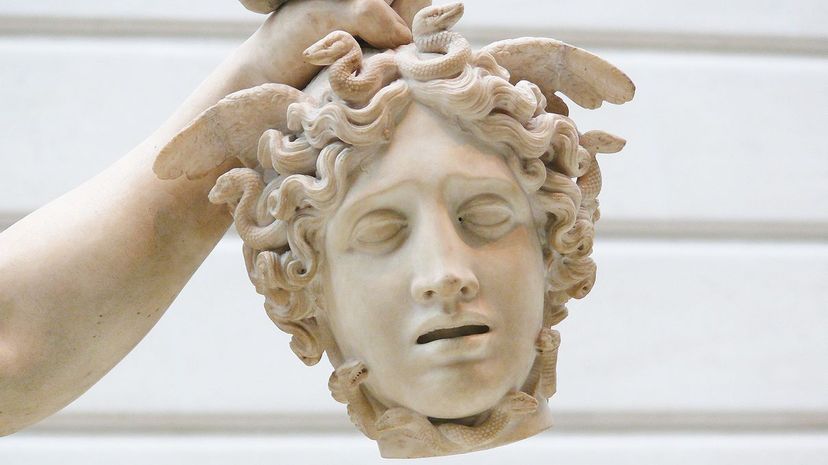
About This Quiz
Hundreds of years ago, Greek gods and religious iconography largely dominated the art of sculpture, with artists mostly working in bronze or marble. Today, you can find completely abstract creations or larger-than-life surrealist landscapes made with anything, from trash to steel scrap to recycled plastic. While a lot has changed in the evolution of the art, sculpture endures as a way to unify communities, spark conversation and promote public art and freedom of expression. From the grotesque to the astonishingly beautiful, every unique piece serves its purpose in the world.
Given how ancient the art of sculpture is, there are too many incredible works out there to name. However, there are several hundred which clearly rank among the most well-known (often, for good reason) in history. The following quiz features 40 of such works. So, how much do you know?
Whether you majored in art history, have visited a number of world-famous museums and galleries, or don't know the difference between "David" and "The Thinker," everyone should try their hand at this test. Are you a novice or basically an art historian? There's only one way to find out! Take a look at the following incredible works to see how much you know.

Standing just over four inches tall, archaeologists discovered this small piece of art in Austria in 1908. Historians estimate that the piece originated somewhere from about 28,000 to 25,000 B.C. Some historians speculate that she was a fertility goddess; others claim that it's a self-portrait made by a woman; others say it was a masturbatory tool. Really, this Old Stone Age relic is anyone's guess.
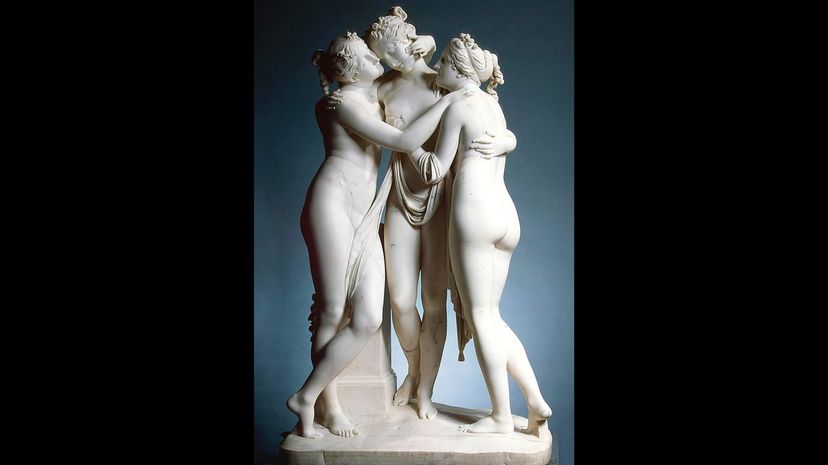
Antonio Canova sculpted this work, which depicts the daughters of Zeus, between 1814 and 1817. The daughters (Euphrosyne, Aglaea and Thalia) were thought to symbolize mirth, elegance and youth. The 6th Duke of Bedford, John Russell, first commissioned a version of the work in the early 19th century.
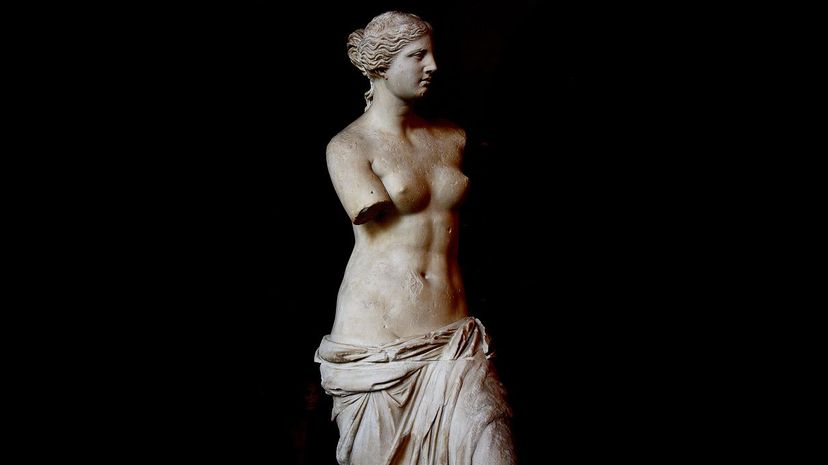
Historians generally attribute this marble work to Alexandros of Antioch and believe it was crafted some time between 130 and 100 B.C. While some academics think it depicts ancient Grecian sea-goddess Amphitrite, most think it is the goddess of love and beauty, Aphrodite.
Advertisement
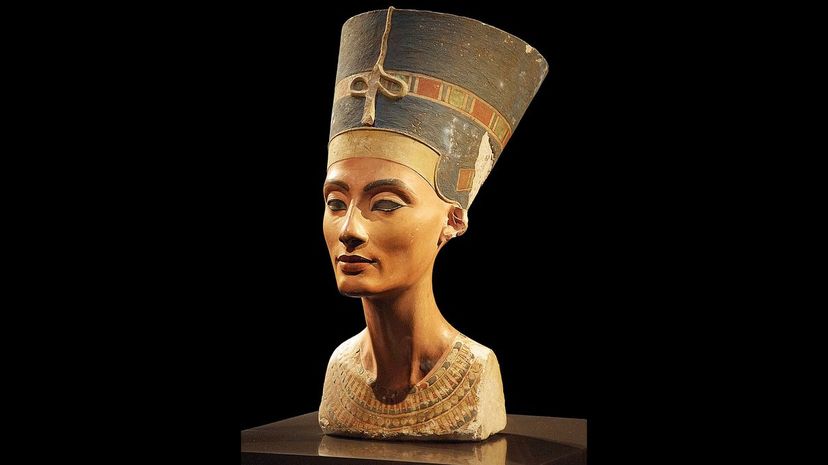
The Bust of Nefertiti dates back to around 1345 B.C. Archeologists found it buried within the Amarna ruins, which was the capital city built by Akhenaten, who is perhaps Ancient Egypt's most divisive Pharaoh. Some historians think Queen Nefertiti ruled his kingdom after Akhenaten's death; others think she was King Tut's mother. Her tomb has never been found.
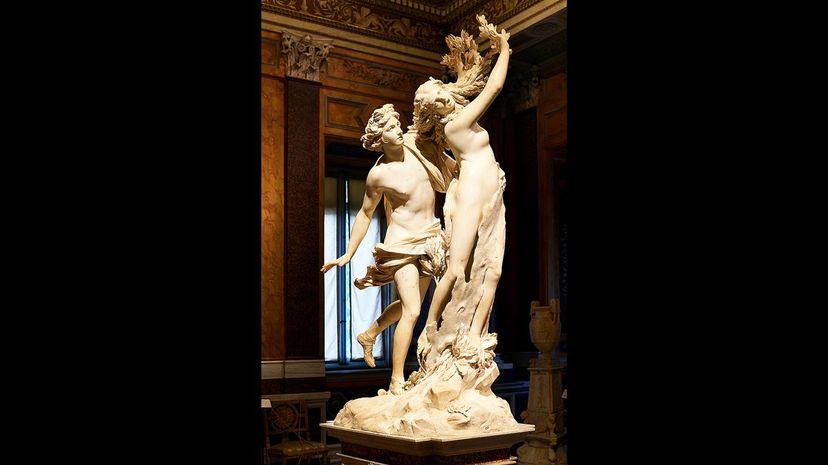
Artist Gian Lorenzo Bernini created this life-sized marble sculpture between 1622 and 1625. Based on the story "Apollo and Daphne" in Ovid's "Metamorphoses," the Baroque work sits in Rome's Galleria Borghese.
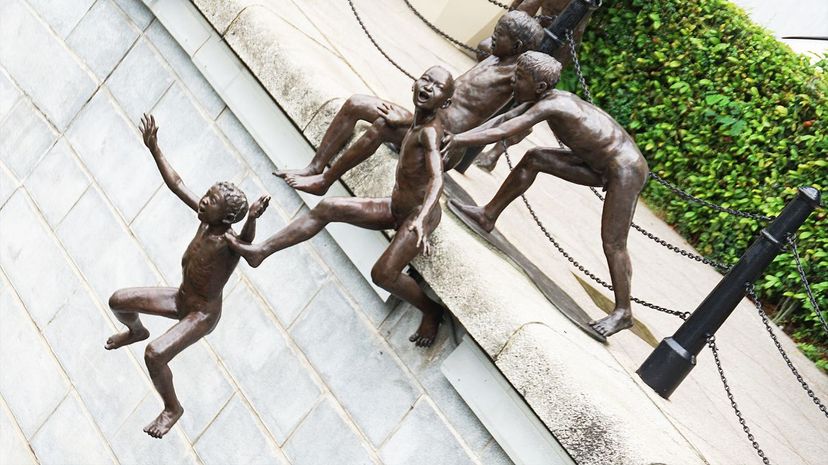
Sculptor Chong Fah Cheong created this compelling piece in 2000, which stands near the Cavenagh Bride in Singapore. The scene depicts five boys leaping into the river below, once a typical scene in the area.
Advertisement
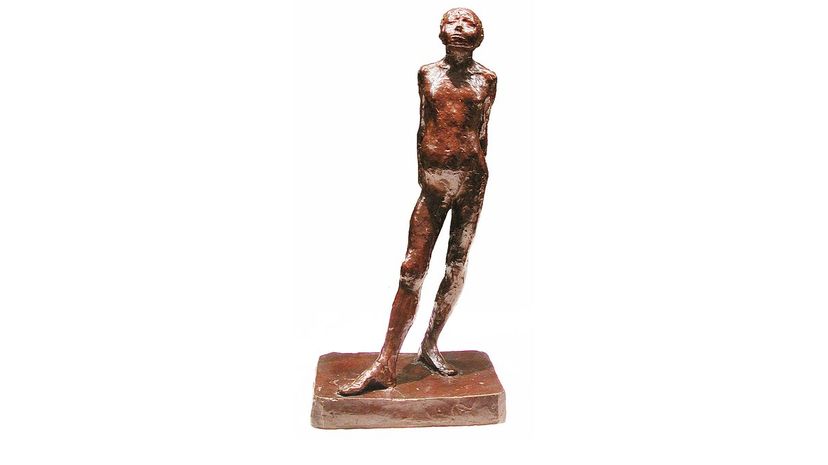
Edgar Degas began this sculpture of a Belgian student in the Paris Opera Ballet dance school, Marie van Goethem, in 1880. The work was originally crafted in wax and dressed with a real tutu, bodice and ballet slippers; the wig was also real hair. Today, there are 28 bronze repetitions of the statue in museums and galleries all over.
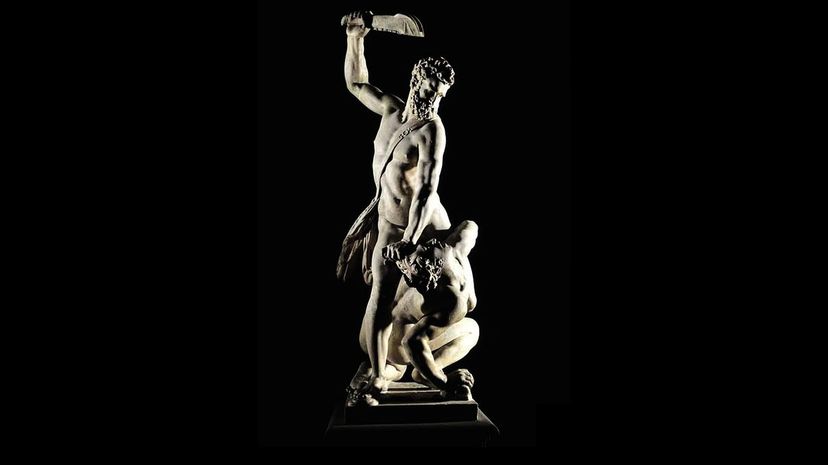
Francesco de' Medici originally commissioned this sculpture in 1562 for a Florence fountain. In 1623, though, it was gifted to Spain and placed in the Palacio de la Ribera in Valladolid. Soon after, Spain gave it to King Charles I. It eventually became one of England's most famous sculptures and is now displayed in the Victoria and Albert Museum.
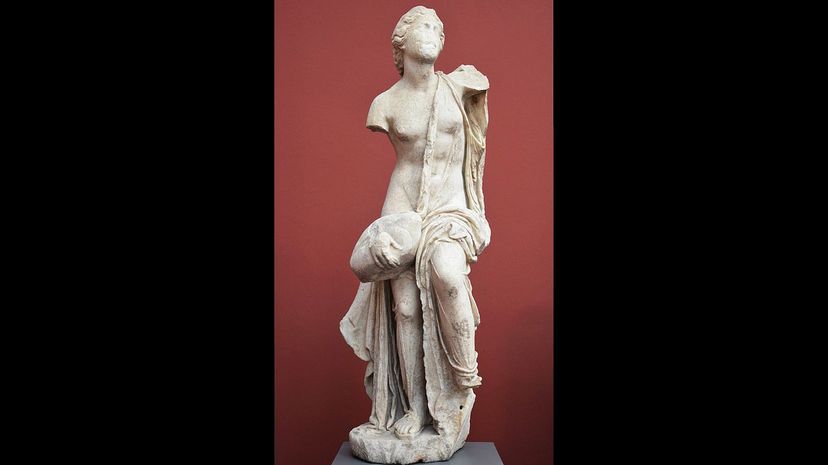
In 1775, archeologists discovered this marble statue in Rome. Though it dates back to the first century, historians think it is a replica of an even earlier Greek statue from the 300s B.C. crafted by Timotheos, a Greek sculptor from 4th century B.C. Today, over 24 replicas can be found all over.
Advertisement
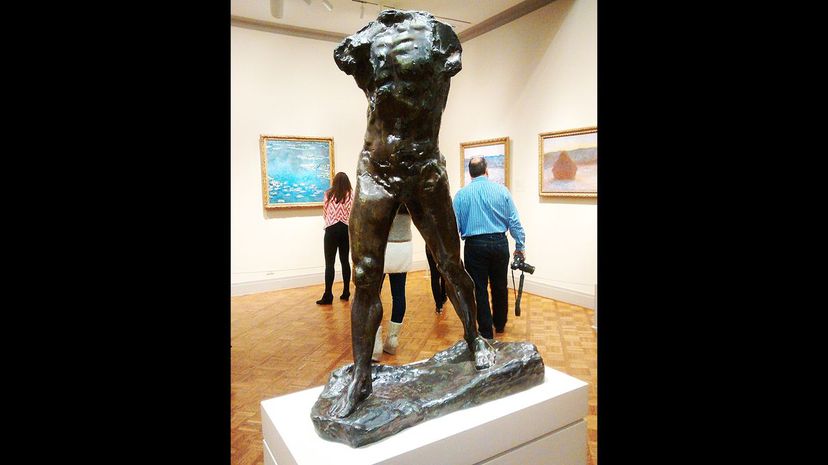
Though he's considered one of the central founders of modern sculpture, most of Auguste Rodin's works, including "The Thinker" and "The Burghers of Calais," tend to stick to traditional methods. "The Walking Man," however, which he made in 1877, rejects conventional style in favor of dynamism and impressionism. It remains unfinished to this day.
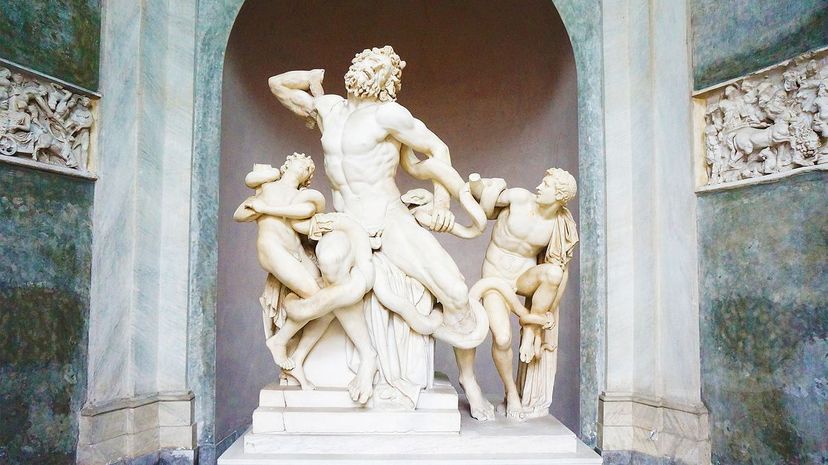
Archaeologists uncovered "Laocoön and His Sons" in 1506, when it was moved to the Vatican, where it remains today. Originating from around 2nd century B.C., the sculpture stems from the myth of a Trojan priest and his sons murdered by angry sea serpents. As legend has it, Poseidon sent the serpents as revenge after Laocoön tried to expose the secret of the Trojan Horse.
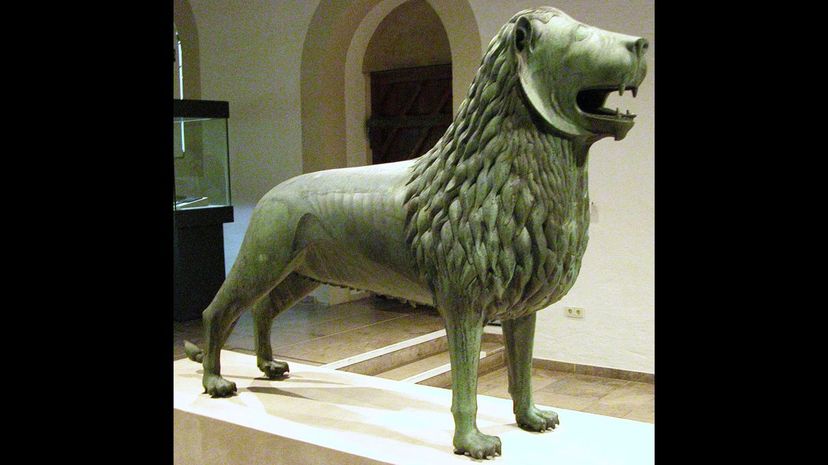
Often called the "Castle Lion," historians think this bronze casting by an unknown artist was created some time between 1164 and 1176, since that aligns with when Welf duke Henry the Lion resided at Brunswick, Germany. The lion originally sat in the center of the expansive castle complex.
Advertisement
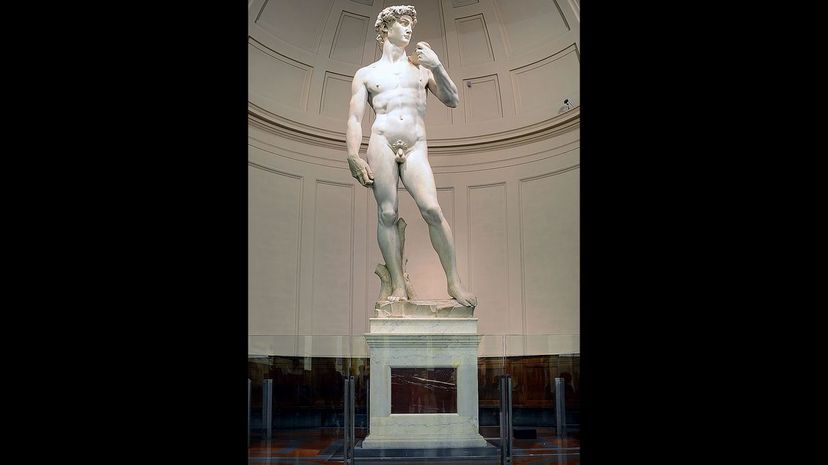
Made between 1501 and 1504, Michelangelo's "David" was originally commissioned as part of a project to decorate Florence, Italy's famous cathedral, the Duomo. But when Michelangelo's six-ton finished product was too heavy for the cathedral roof, it was instead installed at Florence's town hall, Palazzo Vecchio. The Florentine public immediately embraced the High Renaissance artwork and deemed it an emblem of resistance. Accademia Gallery has been the David's home since 1873.

Commissioned in 1787, this marble sculpture is emblematic of the unfolding Romanticism movement. It depicts the god Cupid tenderly awakening the previously lifeless Psyche with a warm embrace. Artist Antonio Canova adapted the story of "Cupid and Psyche" from Latin writer Lucius Apuleius' novel "The Golden Ass."
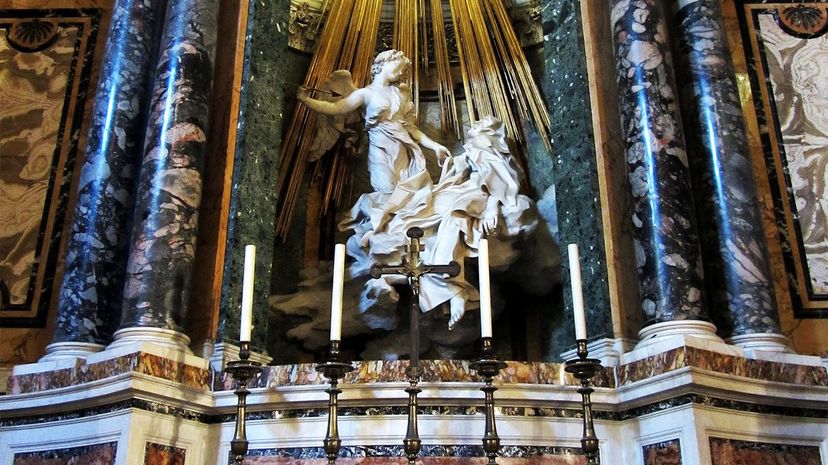
Gian Lorenzo Bernini created the "Ecstasy of Saint Teresa" between 1647 and 1652. Considered a formative example of High Roman Baroque style, Bernini made it for the Church of Santa Maria della Vittoria. Like many Baroques of the period, it possessed ties to the Counter-Reformation movement, in which the Catholic Church attempted to reify its notoriety against the rise of Protestantism. The work features the Spanish nun and mystic Saint Teresa of Ávila, who recounted her meeting with an angel.
Advertisement
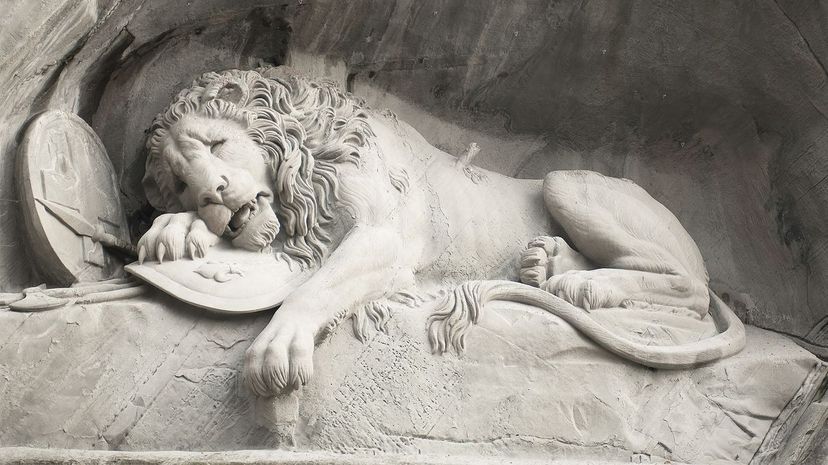
Artist Bertel Thorvaldsen designed this rock relief and Lukas Ahorn carved it. The statue memorializes the Swiss Guards who died in the French Revolution. Mark Twain called the sculpture "the most mournful and moving piece of stone in the world."
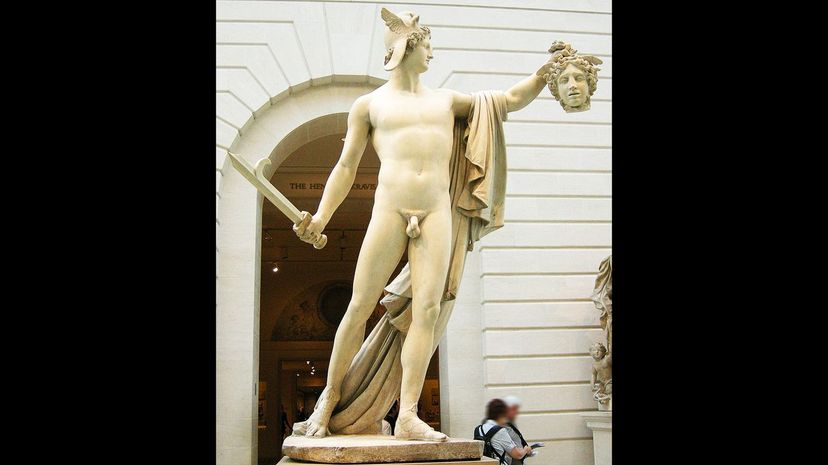
Antonio Canova made two versions of this Neo-Classical sculpture between 1757 and 1822. The marble structures depict the Greek hero Perseus and stand at the Vatican in Rome and the Metropolitan Museum of Art's European Sculpture Court.
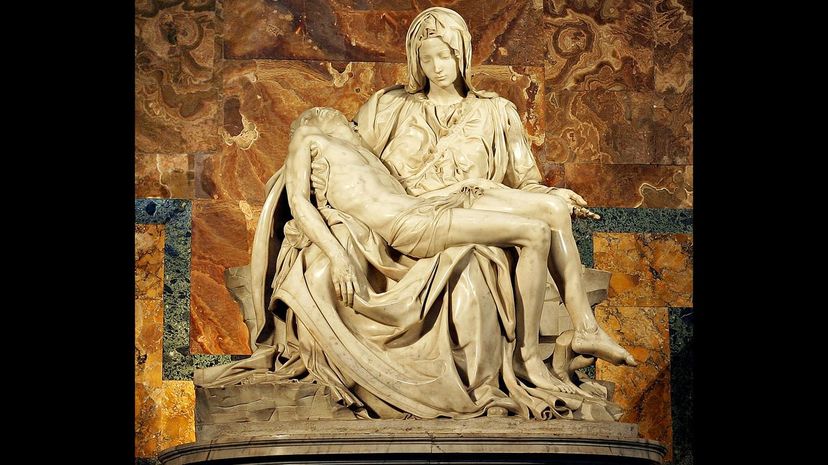
"The Pietá" features Jesus laid across the lap of Mary post-Crucifixion. Crafted between 1498 and 1499, the statue was originally commissioned for the funeral monument of French Cardinal Jean de Bilhères before it was moved to St. Peter's Basilica, Vatican City, in the 18th century.
Advertisement
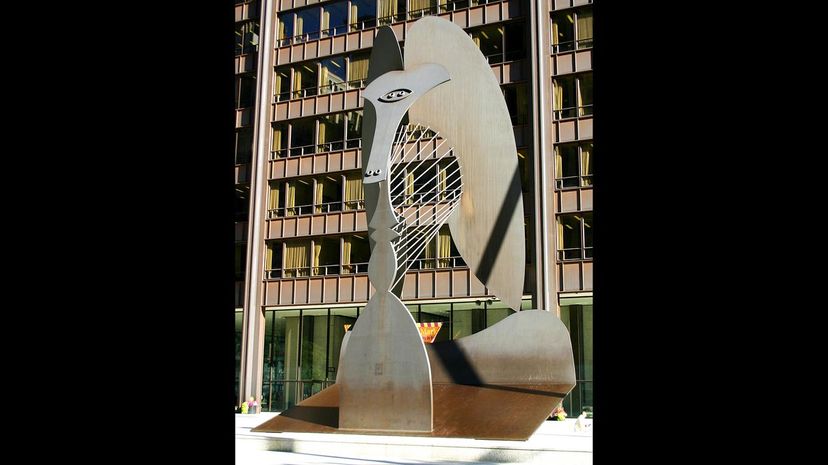
Picasso's 50-foot tall and 162 ton statue was unveiled in 1967 in Chicago's Daley Plaza. The Cubist sculpture has become a well-known city landmark, and you can often find visitors climbing on it like a jungle gym.
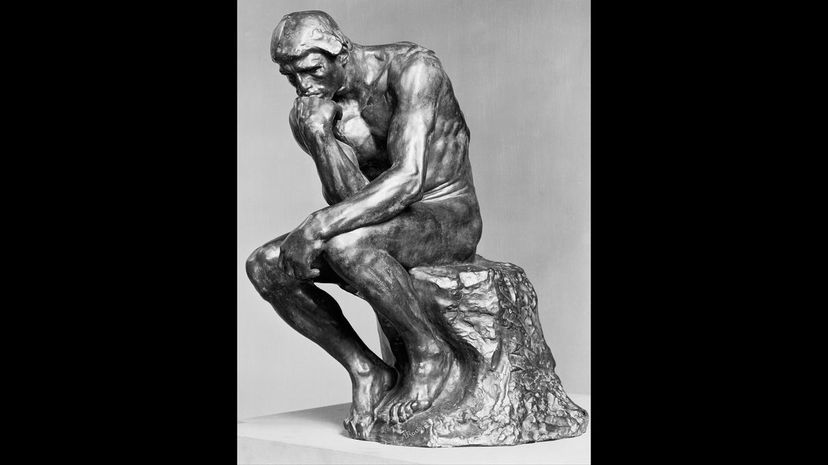
French sculptor Auguste Rodin made 28 life-size versions of the famous bronze sculpture "The Thinker" over the course of his career. Rodin originally made the piece out of plaster in 1881, and it sat at the tympanum at "The Gates of Hell." It was originally called "The Poet" and meant to represent Dante. Today, it is often viewed as a symbol of philosophy.
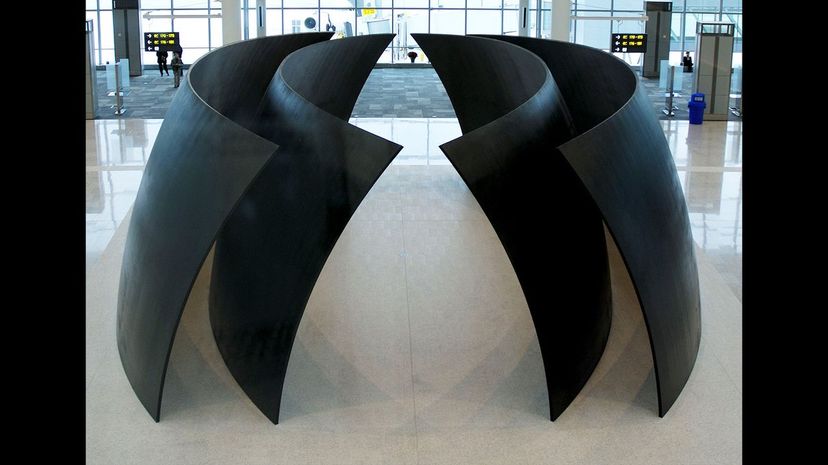
Richard Serra was a Post-minimalist artist who resisted traditional Minimalism's use of clean, linear lines. The laws of gravity were integral to Serra's work, and were also likely why a few of his pieces accidentally collapsed. The wall's precarious positioning directly contrasts its stark leadenness.
Advertisement
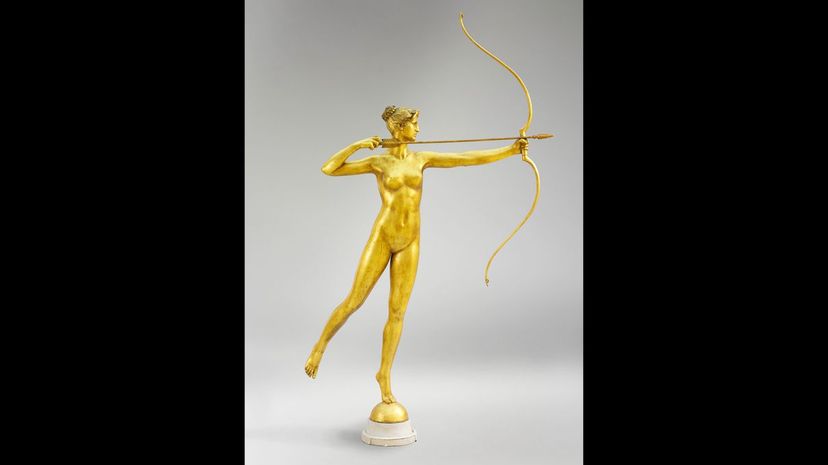
Also called "Diana of the Tower," sculptor August Saint-Gaudens formed this copper sheet tower, which represents the Roman goddess Diana, in 1892. Until 1925, it stood atop the tower of Madison Square Garden and served as an iconic New York City monument. Since 1932, it has remained in the Philadelphia Museum of Art collection.
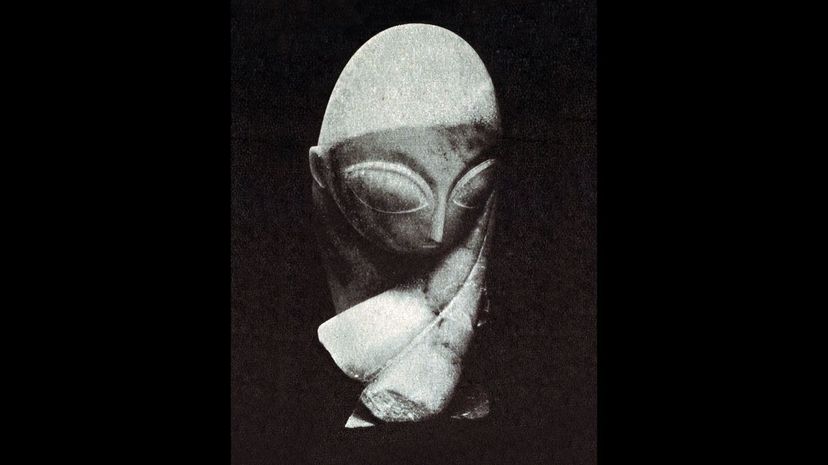
Artist Constantin Brancusi made this piece depicting his lover in 1913, which would soon become an emblem of early-20th century modernist sculpture. His abstract work, which was inspired by folk art from his home of Romania, was considered a pioneering shift to minimalism. His refusal to distinguish between the artwork's base and the object also was deemed groundbreaking.
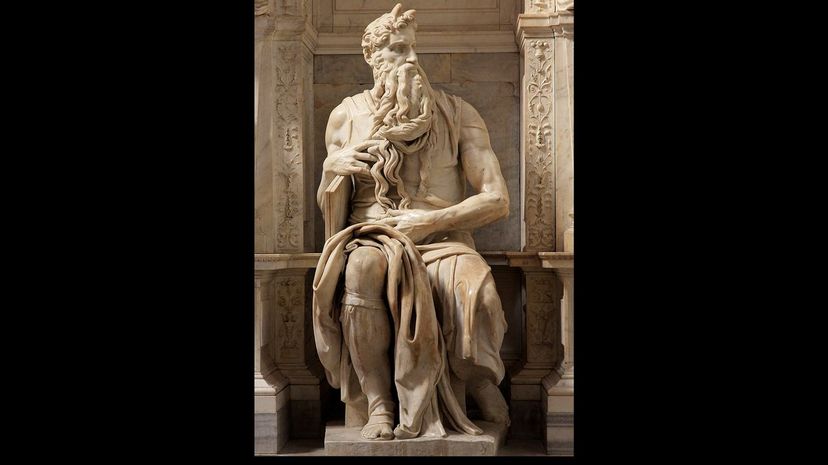
High Renaissance artist Michelangelo crafted this sculpture from 1513 to 1515. Pope Julius II commissioned the work for his tomb; it now sits in the church of San Pietro in Vincoli, Rome.
Advertisement
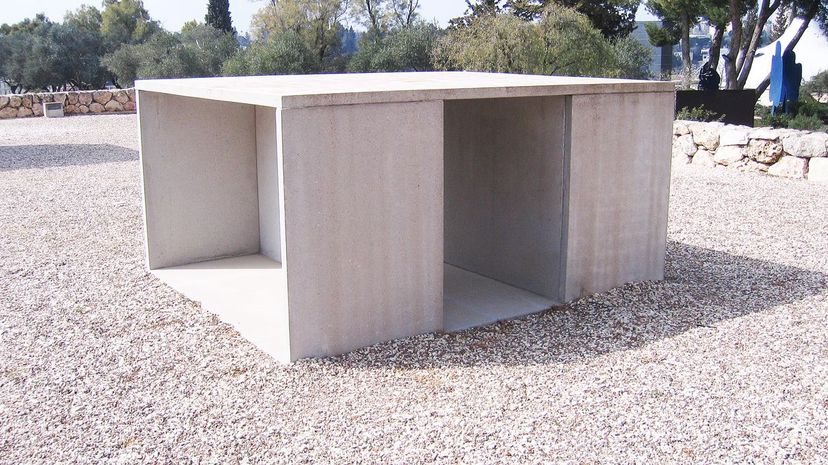
Donald Judd became a pioneering figure in the Minimal Art movement with his streamlined pieces, including this 1991 work located in Jerusalem's Israel Museum. The box was Judd's quintessential form, which he often created with materials adopted from industrial methods.
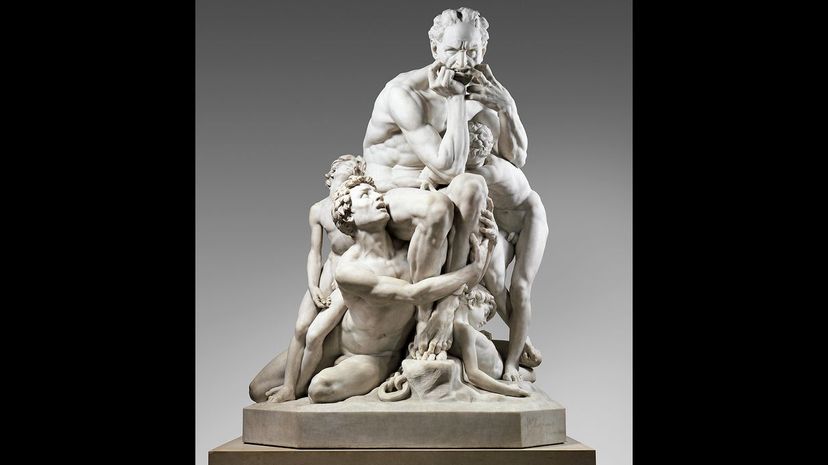
"Ugolino and His Sons" depicts Ugolino from Dante's "Inferno." In the epic poem, Ugolino is locked in prison and starved alongside his children and grandchildren. Carpeaux's piece is meant to depict the character at the moment that he debates cannibalism.
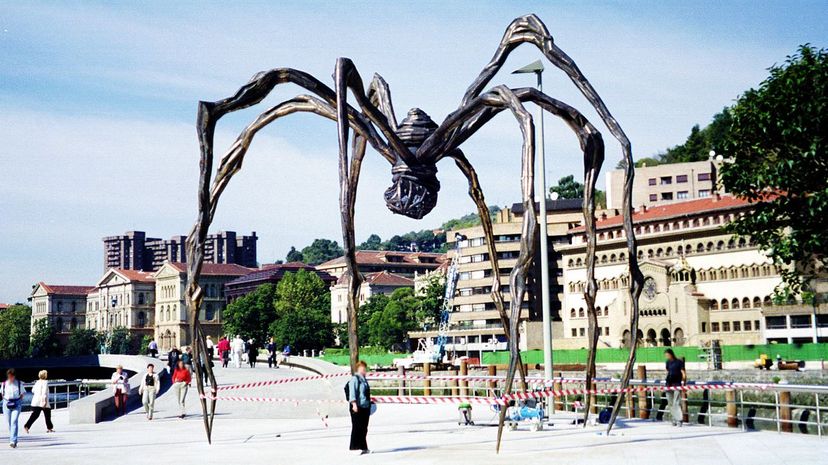
French artist Louise Bourgeois created "Spider" in 1996 at the age of 85. She made several versions of the granite and bronze sculptures, which were made in tribute to her mother, who was a tapestry restorer. Like spiders' webs, such work requires the winding of thread.
Advertisement
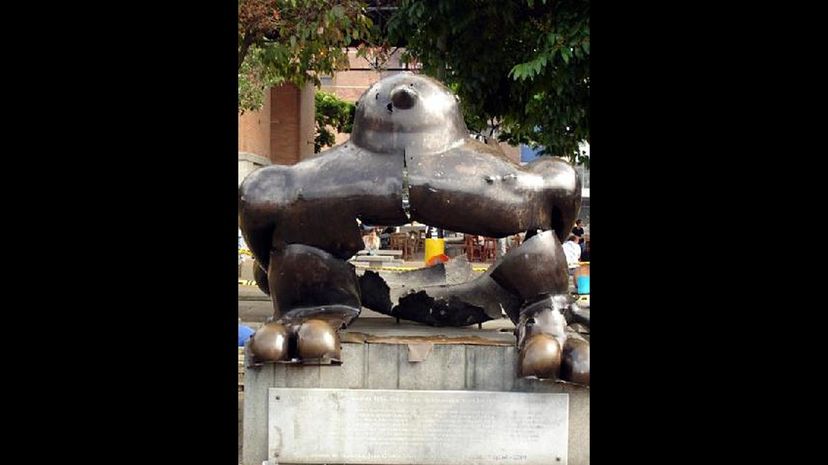
Fernando Botero created the first "Bird of Peace" sculpture in 1994, which was installed in the heart of Medellin, Colombia. During a concert in 1995, though, the sculpture blew up during a devastating attack that killed 23 people and injured many more. In 2000, the artist created an identical bird next to the remnants of the original as a message of peace and solidarity with the victims, their families, and the culture as a whole.
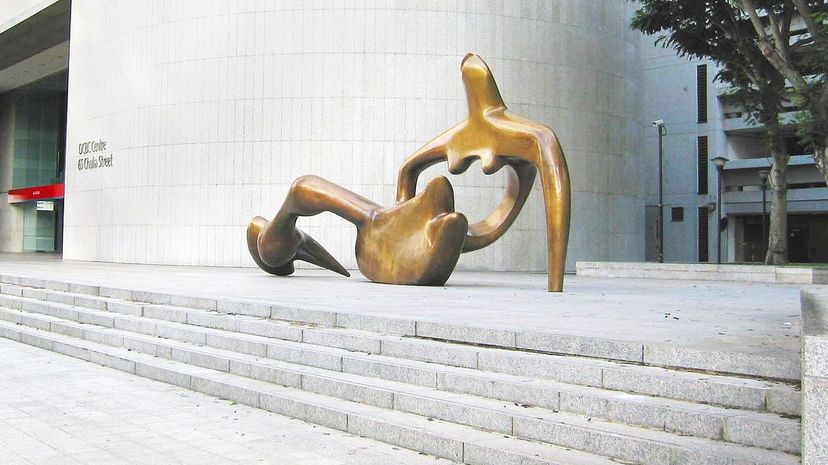
English artist Henry Moore's "Large Reclining Figure" was commissioned by Singapore's Oversea-Chinese Banking Corporation in 1984. His original sculpture, "Reclining Figure 1938," is quite small, measuring about six by 13 inches. "Large Reclining Figure," shown here, measures 30 feet in length and is the largest of Moore's abstract human figure sculptures.
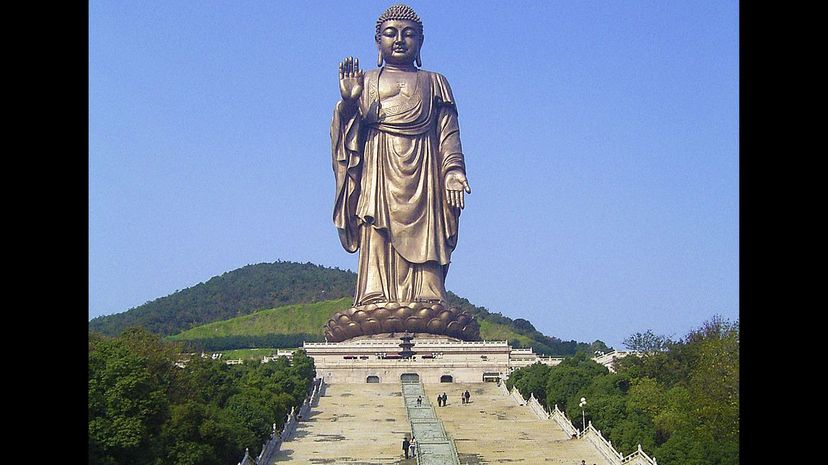
The Grand Buddha, a bronze statue weighing over 700 tons and reaching nearly 300 feet high, is among the largest Buddha statues in the world. Artists and craftspeople completed the structure in 1996.
Advertisement
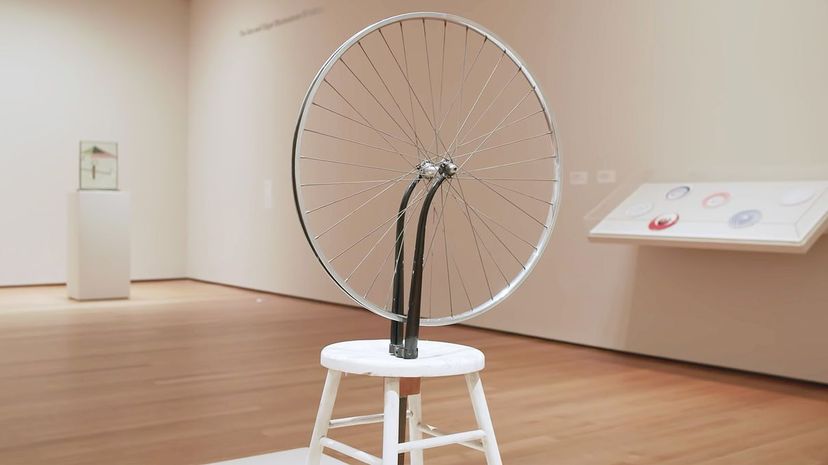
Made in 1913, "Bicycle Wheel" is the first of Duchamp's renowned "readymades." Featuring a bicycle wheel attached to a kitchen stool, Duchamp maintained that traditional sculpture methods seemed meaningless in the era of mass factory-made goods. Duchamp's work is considered one of the earliest examples of Conceptual Art.

American figurative sculptor Zenos Frudakis (shown here) created this inspiring work in 2001. Crafted from bronze, Frudakis said he hoped to "create a sculpture almost anyone, regardless of their background, could look at and instantly recognize that it is about the idea of struggling to break free."
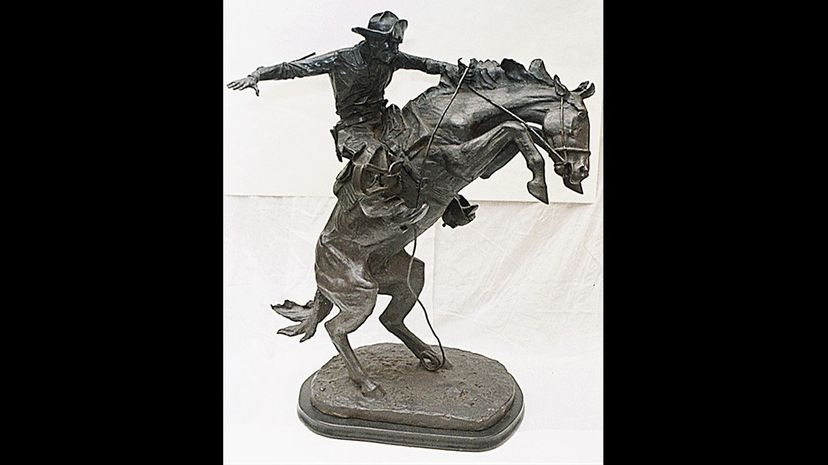
"The Bronco Buster" is American artist Frederic Remington's first and most famous work. He based the work upon several former sketches he made, including one for a piece on Theodore Roosevelt called "The Home Ranch" in "Century Magazine."
Advertisement
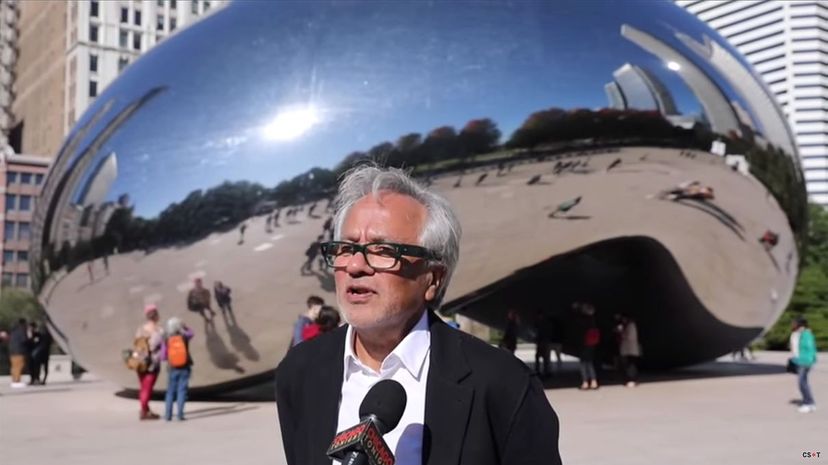
Created by Artist Anish Kapoor (shown here) and nicknamed "The Bean" by locals in the city of Chicago where it resides, this piece of public art is made from mirrored steel that creates a funhouse-like effect. Located in Second City's Millennium Park, it frequently attracts large crowds of eager selfie-snappers.
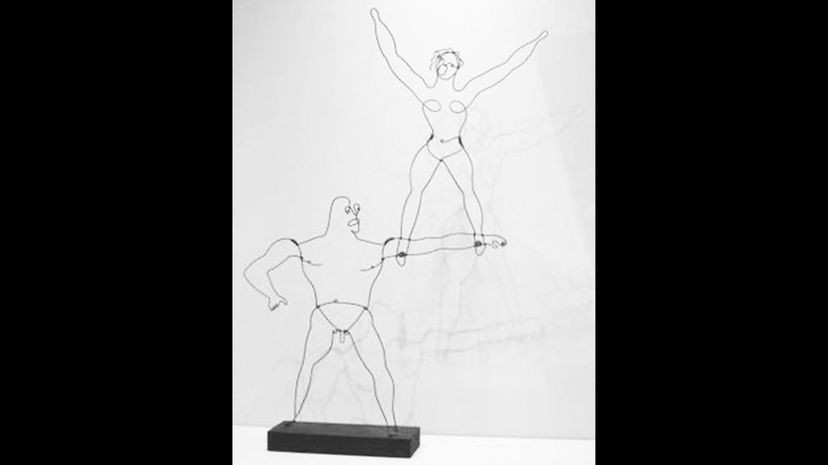
Alexander Calder created this depiction of acrobats out of brass wire models and wood in 1928. The piece is one of several Calder made depicting contortionists, acrobats, sword eaters, lion tamers and more. While living in Paris, Calder attempted to perform live acts borrowed from some of these pieces.
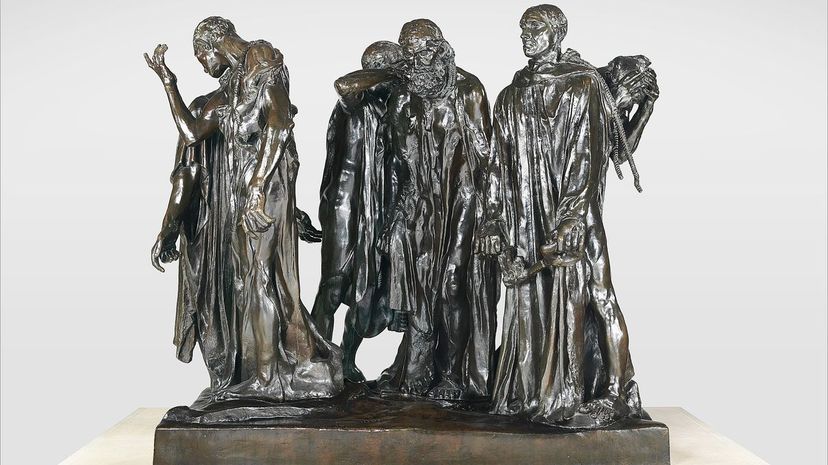
While French artist Auguste Rodin's "The Thinker" receives more popular attention, his "The Burghers of Calais" remains seminal to the history of sculpture. Commissioned for a park in Calais, the monument is viewed as one of the earliest shifts toward realism in sculpture. Rather than featuring the men on a pedestal, he displayed them at ground level. The work depicts six French elders who volunteered themselves for execution to save their people during the English siege in the Hundred Years' War.
Advertisement
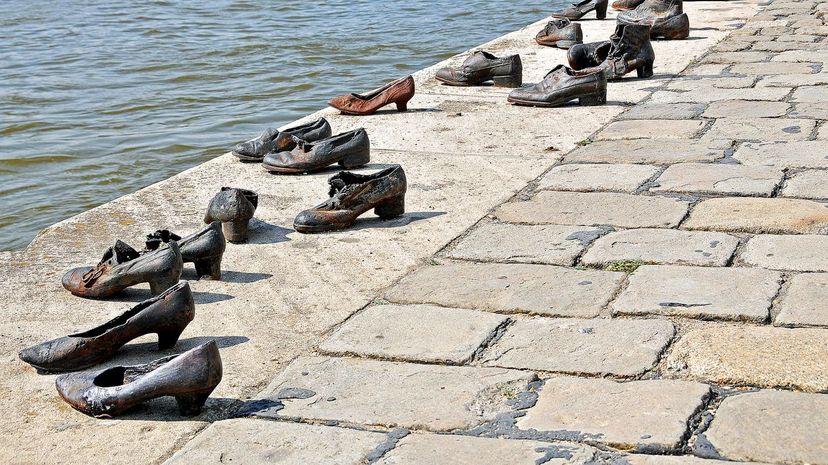
Film director Can Togay created this sculpture to honor the lives of the Jewish people killed by the far-right Hungarian group, Arrow Cross, during World War II. In the tragic incident, the militia commanded the people to remove their shoes and were shot at the edge of the river, which their bodies fell into.
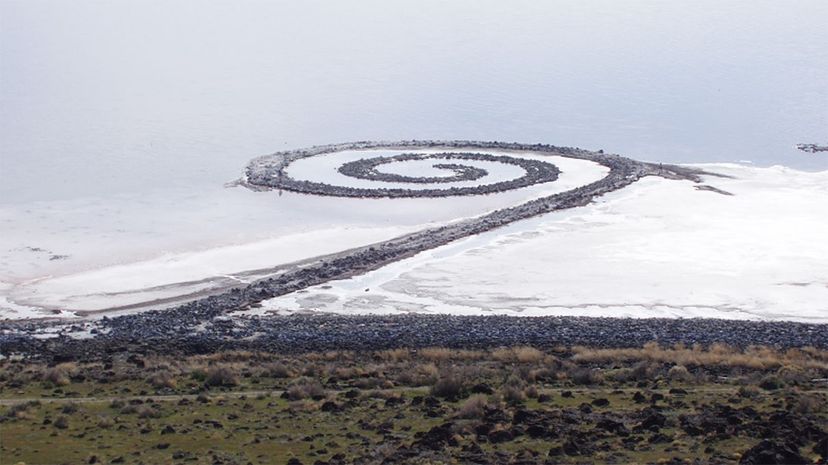
Robert Smithson was a key figure in the revolt against art's commercialism with pieces like this one, which is located on Utah's Great Salt Lake. Dubbed "land art," Smithson's site-specific works rely largely on materials taken directly from the surrounding earth. "Spiral Jetty" was submerged for decades, until a drought caused it to resurface in the early 2000s. It remains visible today.
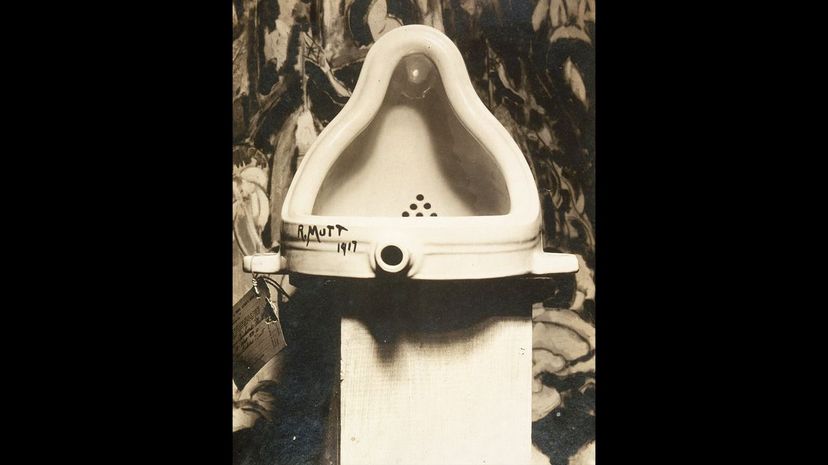
"Fountain" is another one of Duchamp's famous readymade sculptures. The piece features a porcelain urinal with the signature "R. Mutt." Duchamp originally paid to submit it to New York's Society of Independent Artists exhibition. The committee rules stated that it could not reject any artwork, but they never placed it in the main show area.
Advertisement
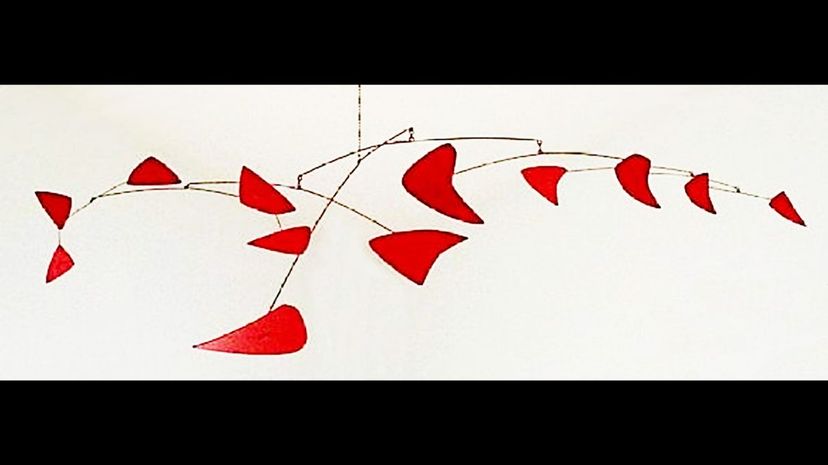
Calder's "Red Mobile," which is constructed from painted sheet metal and rods, is currently on display at the Montreal Museum of Fine Arts. The avant-garde work strongly contrasted other sculptures of the time due its freedom of movement. Calder's friend and fellow artist Marcel Duchamp allegedly gave the piece its name.